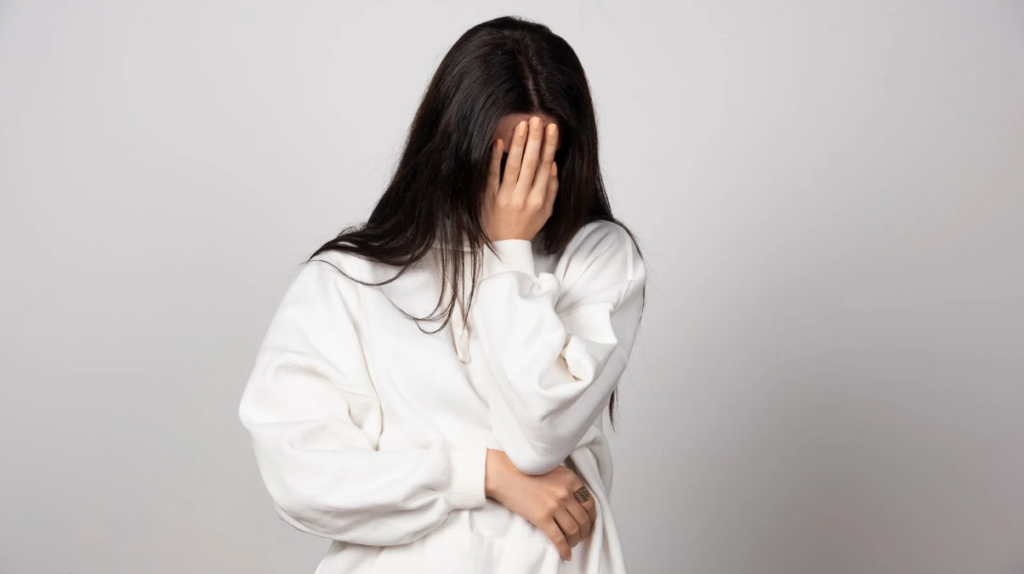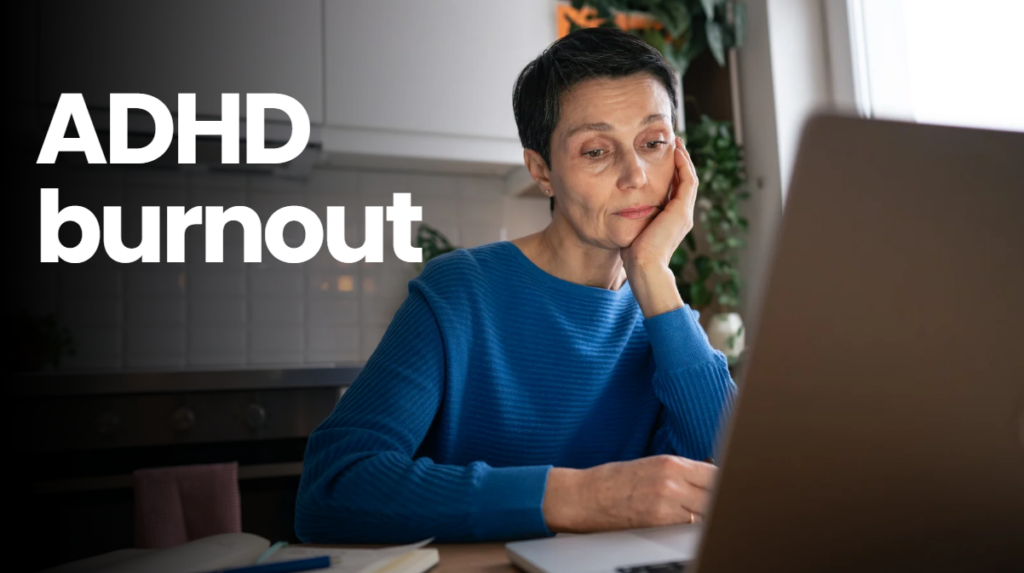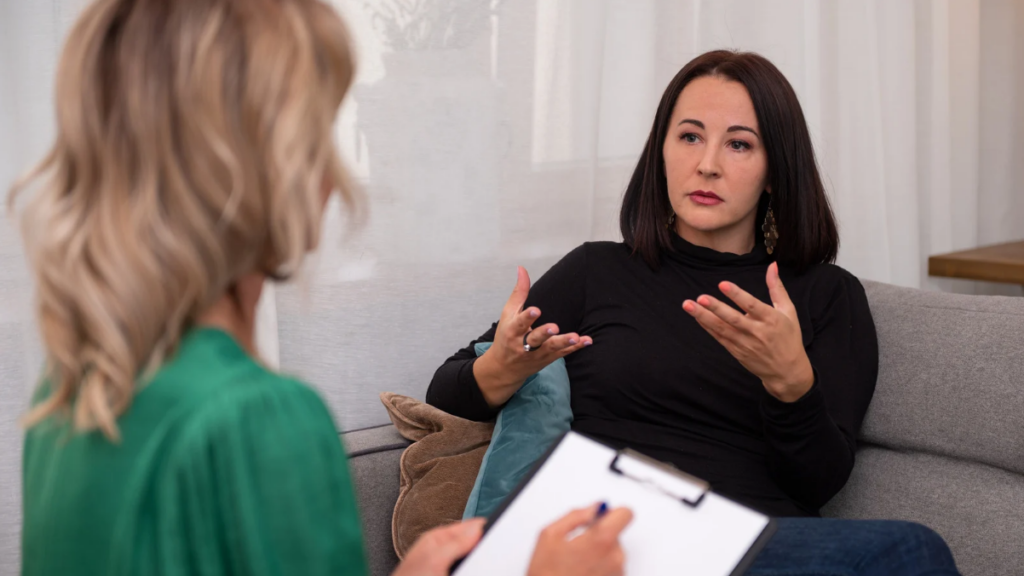
ADHD symptoms in women often appear differently than the classic image of hyperactivity. Instead of obvious restlessness, they may show up as emotional overwhelm, forgetfulness, disorganization, or a constant sense of mental clutter. These quieter signs are why many women go undiagnosed for years, mistaking their struggles for personal failures rather than brain-based differences.
ADHD is a neurodevelopmental condition that affects attention, impulse control, and executive functioning. When left unrecognized, women often develop coping mechanisms that mask their challenges—until exhaustion, anxiety, or burnout take over. Understanding and addressing ADHD symptoms in women can turn self-blame into self-awareness, opening the door to clarity, balance, and meaningful support.
The Three Main Types of ADHD
People with ADHD can be grouped into one of three main categories, each presenting unique patterns of behavior and thinking.
1. Predominantly Inattentive Type
This type of ADHD is more frequently seen in women and is often overlooked because its symptoms can appear subtle or internalized. Instead of being disruptive, women with inattentive ADHD may seem quiet, lost in thought, or forgetful—when in reality, their brains are constantly active and easily overstimulated.
Common characteristics include:
- Difficulty maintaining focus, especially on tasks that feel repetitive or uninteresting
- Tendency to daydream or “zone out” during conversations or meetings
- Forgetting details, deadlines, or where things are placed
- Struggling to start or complete projects despite good intentions
- Frequently losing track of time or becoming easily distracted by thoughts
- Being perceived as lazy or careless, despite trying hard to stay organized
2. Predominantly Hyperactive-Impulsive Type
This type is marked by high energy and impulsivity, though it often looks different in women than in men. While men may show physical hyperactivity, women tend to experience mental hyperactivity—a constant stream of thoughts and emotions that can be difficult to control.
Common characteristics include:
- A racing mind that never seems to quiet down
- Talking excessively or interrupting others without meaning to
- Acting on impulse—such as shopping sprees, spontaneous plans, or emotional outbursts
- Difficulty relaxing or sitting still, always needing to stay “busy”
- Feeling impatient or easily frustrated
- Taking on multiple commitments at once, then feeling overwhelmed
3. Combined Type
The combined type includes traits of both inattention and hyperactivity-impulsivity, making it the most complex and often the most draining to manage. Women with this form of ADHD may appear productive and capable, but internally they struggle to keep up with constant mental noise and emotional swings.
Common characteristics include:
- Alternating between hyperfocus and complete distraction
- Feeling mentally exhausted from juggling too many thoughts at once
- Difficulty prioritizing or finishing what’s started
- Chronic disorganization despite repeated efforts to improve
- Mood swings or emotional sensitivity
- A constant sense of underachievement, even when accomplishing a lot
Why ADHD in Women Is Often Overlooked

ADHD in women has historically been under-recognized due to gender bias in diagnostic criteria. Early research focused on boys displaying external hyperactivity—behavior that draws attention in classrooms. Girls, by contrast, tend to internalize their symptoms, which appear as inattentiveness or emotional sensitivity.
Society also plays a role. Women are often expected to be organized, nurturing, and emotionally stable. Many learn to mask their ADHD symptoms by overpreparing, staying late to finish tasks, or striving for perfection. While these strategies help them function, they come at the cost of burnout and emotional exhaustion.
Hormonal changes further complicate the picture. Estrogen, which affects dopamine (a key neurotransmitter involved in ADHD), fluctuates during the menstrual cycle, pregnancy, and menopause—often intensifying symptoms. Moreover, coexisting conditions such as anxiety or depression can obscure the underlying ADHD, leading to years of misdiagnosis or missed opportunities for support.
Core ADHD Symptoms in Women
ADHD symptoms in women extend far beyond forgetfulness or distraction. They touch nearly every aspect of life—mental, emotional, behavioral, and social.
1. Cognitive Symptoms
- Persistent trouble focusing on conversations or tasks.
- Forgetfulness—missing appointments, misplacing items, or losing track of time.
- Difficulty prioritizing or completing long-term projects.
- “Time blindness”—underestimating how long tasks take or missing deadlines.
- Mental fatigue after periods of concentration.
2. Emotional Symptoms
- Intense emotional reactions and sensitivity to rejection, also known as Rejection Sensitive Dysphoria.
- Mood swings, frustration, or low tolerance for stress.
- Chronic feelings of guilt or inadequacy—believing they’re “not doing enough.”
- Difficulty regulating emotions, leading to cycles of overwhelm and withdrawal.
3. Behavioral Symptoms
- Impulsive spending, eating, or decision-making.
- Starting new hobbies or projects without finishing them.
- Inconsistent performance at work or school.
- Overcommitting to please others, followed by burnout.
4. Physical and Social Manifestations
- Restlessness or the inability to relax, even during downtime.
- Tension headaches or sleep difficulties linked to mental overactivity.
- Struggles to maintain friendships or relationships due to forgetfulness or emotional reactivity.
- Overcompensation through perfectionism or people-pleasing to hide ADHD struggles.
ADHD in Adolescent and Adult Women: How It Evolves

ADHD often begins in childhood, but the signs in girls differ from those in boys. Instead of acting out, girls may daydream, talk excessively, or appear “too sensitive.” Because these traits are socially acceptable, they rarely trigger concern.
As responsibilities grow in adulthood—careers, relationships, parenting—many women hit a breaking point. The coping mechanisms that once helped them manage now collapse under increased pressure. They may struggle to balance work deadlines, household duties, and emotional demands, leading to ADHD burnout.
Masking behaviors can also lead to emotional exhaustion. Constantly pretending to be organized or calm drains mental energy. Over time, many women develop anxiety or depression from years of trying to “fit in” rather than understanding how their brains work.
Hormones and ADHD: The Female Connection
Hormones play a powerful role in how ADHD symptoms appear and fluctuate. Estrogen influences dopamine levels, the neurotransmitter that regulates focus and motivation. When estrogen levels drop—during menstruation, after childbirth, or in menopause—ADHD symptoms may worsen.
- Puberty: Emotional regulation and impulsivity often intensify.
- Menstrual Cycle: Many women notice heightened distractibility and irritability before menstruation.
- Pregnancy: Estrogen surges can sometimes improve symptoms, while postpartum drops may worsen them.
- Menopause: Lower estrogen levels can cause significant cognitive and emotional changes.
For many women, understanding this hormonal connection provides clarity and allows for more personalized treatment plans that consider biological and emotional factors together.
Common Coexisting Conditions in Women with ADHD
ADHD rarely exists in isolation. Many women experience comorbid conditions that either mask or magnify their symptoms.
- Anxiety and Depression: Years of feeling misunderstood or failing to meet expectations can lead to chronic stress and sadness.
- PMDD (Premenstrual Dysphoric Disorder): Hormonal sensitivity may intensify ADHD-related mood swings.
- Eating Disorders: Impulsivity or attempts to control emotions may contribute to disordered eating behaviors.
- Sleep Problems: Racing thoughts make it difficult to fall or stay asleep, further affecting concentration and mood.
Recognizing these overlaps is essential for accurate diagnosis and holistic treatment.
Getting Diagnosed: What Women Should Know
For women, obtaining an ADHD diagnosis can be both liberating and emotional. Many report feelings of validation after years of self-doubt.
Because ADHD symptoms in women often manifest subtly, healthcare providers must conduct comprehensive evaluations that include clinical interviews, self-report questionnaires, and family or educational history. Discussing how symptoms affect daily functioning—rather than focusing only on hyperactivity—is key.
A proper diagnosis opens the door to effective treatment, but it also brings self-awareness. Understanding the “why” behind lifelong struggles can help women replace shame with self-compassion.
Treatment and Management Options

Managing ADHD in women requires a personalized approach that considers biological, emotional, and lifestyle factors.
1. Personalized Medication Management for ADHD
Stimulant medications (such as methylphenidate or amphetamines) and non-stimulant options can improve focus and impulse control. However, dosage and effectiveness may vary with hormonal changes, so ongoing consultation with a psychiatric provider is important. Medication alone isn’t a cure—it’s one piece of a broader care plan.
2. Therapy and Coaching
Cognitive Behavioral Therapy (CBT) helps women identify unhelpful thought patterns, build structure, and manage emotions. ADHD coaching offers practical strategies—such as planning systems, accountability check-ins, and time management tools—that support daily functioning. Mindfulness practices and stress-reduction techniques can also reduce reactivity and increase focus.
3. Lifestyle Strategies
Lifestyle changes play a vital role in symptom control:
- Routines: Establish consistent daily habits to reduce decision fatigue.
- Organization Tools: Use planners, reminders, or phone apps to stay on task.
- Physical Activity: Exercise increases dopamine and serotonin, improving concentration and mood.
- Nutrition and Sleep: Balanced meals and sufficient rest stabilize energy and focus.
- Self-Compassion: Replacing negative self-talk with patience helps prevent burnout.
With the right support system, women can thrive by aligning their environments with how their brains naturally function.
When to Seek Professional Help

If you constantly feel overwhelmed, disorganized, or emotionally exhausted despite your efforts, it may be time to consult a mental health professional. Persistent struggles with focus, procrastination, or self-criticism are not signs of weakness—they are signs that your brain needs support.
A psychiatric provider, psychologist, or licensed therapist can assess your symptoms and recommend treatment tailored to your unique needs. Seeking help is not an admission of failure; it’s a powerful act of self-care and empowerment.
Conclusion
ADHD in women is real, complex, and often misunderstood—but it is absolutely manageable with the right care and understanding. Awareness is the first step toward healing, and recognizing how ADHD manifests differently in women helps break the cycle of stigma and misdiagnosis. By learning to identify the unique signs, women can finally access the support and tools they need to thrive.If you see yourself in these descriptions, EmpowHer Psychiatry and Wellness is here to help. Our compassionate team specializes in diagnosing and treating ADHD in women through personalized, evidence-based care. From comprehensive evaluations to therapy, medication management, and lifestyle support, we empower women to regain focus, restore balance, and live with confidence and clarity.

